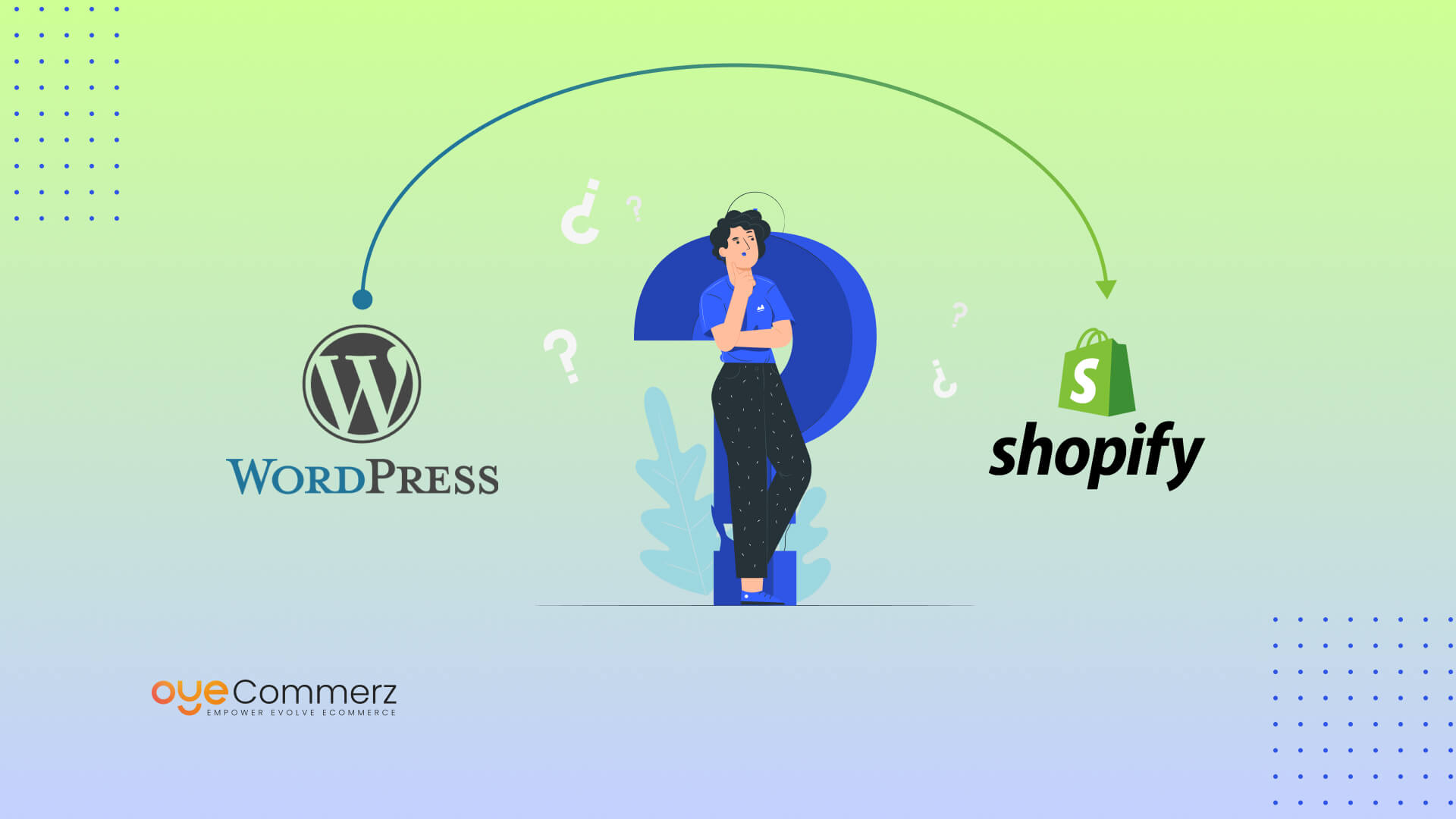The journey of an e-commerce business hinges on its ability to adapt, grow, and provide exceptional customer experiences.
Migrating from WordPress to Shopify is often driven by the need for improved performance, enhanced capabilities, and a robust foundation for growth.
This guide outlines the essential steps, strategies, and insights to ensure your migration to Shopify is successful and disruption-free.
Why Consider Moving from WordPress to Shopify?
Although WordPress is highly adaptable, managing e-commerce through plugins can hinder seamless growth.
Shopify caters to businesses of all sizes with robust features, enterprise-grade security, and growth-focused solutions.
Shopify's reach extends to over 4.5 million stores globally in 2024, confirming its leadership in the e-commerce space.
Migrating to Shopify brings advantages such as streamlined order processing, advanced payment features, and better mobile responsiveness.
Here’s your ultimate step-by-step guide to ensure a smooth transition.
Step 1: Assess Your E-Commerce Needs
Start by reviewing your store’s current performance and identifying future needs.
Pinpoint challenges such as reliance on plugins or suboptimal page speed that restrict growth.
For example, Shopify offers integrated features like Shopify Payments and customizable themes, reducing third-party tool dependency.
Step 2: Develop a Detailed Migration Strategy
Migrating without a structured approach can lead to errors, data loss, or unexpected downtime.
To minimize risks, prioritize critical components such as customer records, product catalogs, and transaction data.
Shopify provides tools and third-party apps to simplify the migration process and safeguard important information.
Step 3: Tailor Your Shopify Experience
Shopify’s customization options let you design a store that aligns perfectly with your brand.
Select or customize themes from Shopify’s library to improve customer interactions.
Explore themes like “Impulse” and “Prestige” for responsive, feature-rich options.
If you’re an enterprise business, Shopify Plus customization takes your branding to the next level.
Oyecommerz specializes in crafting Shopify Plus themes that align with enterprise-level e-commerce needs.
Step 4: Migrate SEO Settings
Retaining your SEO framework during migration prevents search traffic declines.
Shopify tools enable redirection of old URLs to new ones, safeguarding existing traffic.
Customize meta tags and integrate Google Analytics to track performance post-migration.
Reports indicate that 70% of websites experience temporary traffic dips post-migration without proper SEO management.
Step 5: Boost Your Store with Key Shopify Apps
The Shopify App Store provides a wide range of applications to improve your store’s capabilities.
Enhance customer retention with tools like Klaviyo and Yotpo designed for email and review management.
Use Shopify API integrations to connect your store with external systems effortlessly.
Let Oyecommerz connect third-party solutions to your Shopify store for smoother operations.
Step 6: Focus on Mobile Optimization
With mobile commerce dominating 60% of sales in 2024, mobile readiness is critical.
Shopify themes are inherently mobile-responsive, providing a consistent shopping experience across all devices.
Simplify the checkout process for mobile users with Shopify’s secure payment tools like Shop Pay.
With optimized navigation and fast loading times, your store can thrive in Shopify themes for WordPress users the mobile-first era.
Step 7: Empower Your Team with Shopify Training
Shopify’s intuitive platform makes it easy to use, but training reduces post-migration challenges.
Familiarize your employees with Shopify’s dashboard, product management, and reporting functions.
Team training boosts confidence and efficiency in using Shopify’s advanced functionalities.
Step 8: Conduct Thorough Pre-Launch Testing
Run thorough checks on your Shopify store to address potential problems before it goes live.
Verify that product information, inventory, and navigation links are error-free.
Validate payment gateway functionality and test the checkout process on multiple devices.
A well-tested store provides users with a flawless shopping experience from the start.
Step 9: Promote Your Migration Strategically
A successful migration is a great opportunity to engage and excite your audience.
Leverage email marketing and social platforms to highlight the advantages of your upgraded store.
Highlight benefits such as better performance and enhanced security to boost customer confidence.
Conclusion: Empower Your Business with Shopify
Switching to Shopify is not just a migration; it’s a leap toward long-term success.
Shopify’s robust tools, scalability, and seamless integrations create an ideal platform for growth.
For businesses of any size, Shopify offers unparalleled support for achieving e-commerce goals.
Oyecommerz, a certified Shopify Plus partner, guarantees a seamless and effective transition.
Let Oyecommerz assist you in leveraging Shopify to enhance customer satisfaction and drive sales.
Unlock the future of your business with Shopify—partner with us for a flawless migration WordPress to Shopify migration tips experience.
